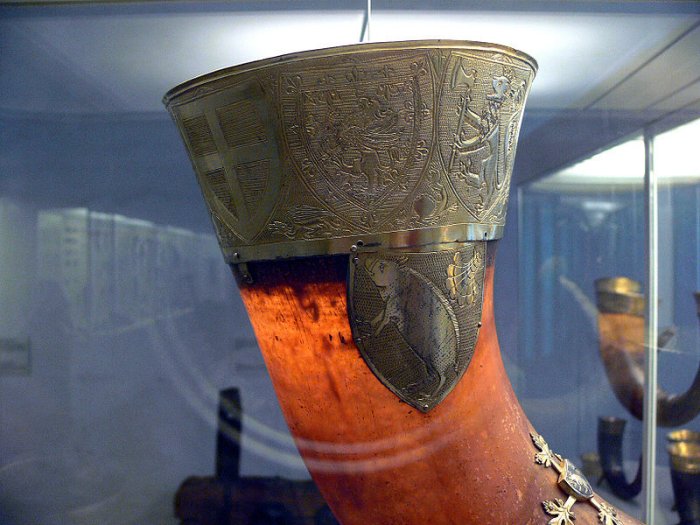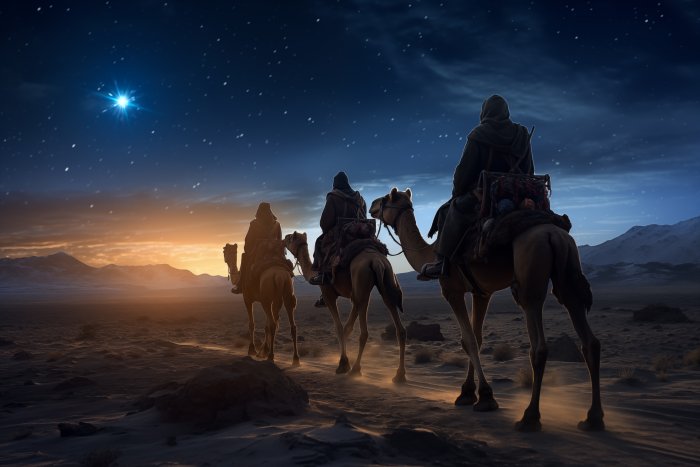Drinking Horn: Important Yule Symbol And Its Connection To Biblical Magi And Christmas
Ellen Lloyd - AncientPages.com - What do the Norse Gods Odin and Thor have in common with the Biblical Magi, the Three Holy Kings? Drinking horns reveal a link between the Yule festival and what we know as Christmas.
Left: Medieval drinking horn, mounted in copper gilt. Image credit: British Museum
Long before the arrival of Christianity, people in Scandinavia celebrated Yule, the winter solstice. This Pagan festival took place on the winter solstice day, around December 21, in the northern hemisphere and lasted 12 days. It was a time when family and loved ones got together and celebrated the rebirth of the Sun.
People loved beer, and the drinking horn became a significant Yule symbol.
The origin of the Christmas holidays can be traced to many ancient Sun cults. These include the celebration of the winter solstice and the return of the Sun.
Several unearthed Bronze Age artifacts reveal the importance of the Sun and beer! Christianity adapted many old customs.
Drinking horns were famous among many different ancient cultures. They were used by Scandinavians, Greeks, Romans, Thracians, Scythians, and people in Africa. People have been drinking from horns for at least 2,600 years.
Vikings produced drinking horns and drank to the memory of their Norse gods, Odin and Thor. In the Prose Edda, a passage describes how Thor drank from a horn that, unbeknown to him, contained all the seas.
Historians haven't been able to find evidence that can be directly linked to Christmas celebrations in pre-Christian times. Still, many artifacts and archaeological discoveries may indirectly be connected to the old Christmas traditions, like drinking beer, bread baking, and festivities in the darkest time.
Early modern drinking horn displayed at the National Museum of Denmark. Credit: Christian Bickel CC BY-SA 2.0 DE
Many Pagan traditions later became part of what we recognize as Christmas traditions. In the Sagas, many stories tell how family members gathered around the table. Delicious food and beer were served.
Several drinking horns have been unearthed in Viking Age burial mounds. Many of these artifacts were found in female graves, perhaps because women were responsible for brewing mead and serving guests.
Odin, Thor And The Three Holy Kings
Several drinking horns were rich in decorations and had runic inscriptions. Runes, Odin's secret language, played an essential part in the lives of the Vikings.
Three Wise Men following the Bethlehem star in the night. Credit: Adobe Stock - Dmitry Rukhlenko
Drinking horns from the late Middle Ages are usually well preserved because they were inherited instead of buried in the soil. Around the mouth is usually a wide brass fitting on these drinking horns, often inscribed in Latin letters with the names of the Three Holy Kings: Caspar, Melchior, and Balthasar.
The drinking tradition changed over time. People continued to drink beer, but instead of honoring Odin and Thor, they celebrated the arrival of the magi, three Holy Kings who came to baby Jesus.
Beliefs changed, but many traditions remained the same.
Written by Ellen Lloyd – AncientPages.com
Updated on December 23, 2023
Copyright © AncientPages.com All rights reserved. This material may not be published, broadcast, rewritten or redistributed in whole or part without the express written permission of AncientPages.com
Expand for referencesMore From Ancient Pages
-
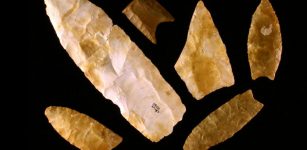 Clovis Culture: Will Ancient Tools Solve Mystery Of North America’s Earliest Inhabitants?
Archaeology | Oct 26, 2020
Clovis Culture: Will Ancient Tools Solve Mystery Of North America’s Earliest Inhabitants?
Archaeology | Oct 26, 2020 -
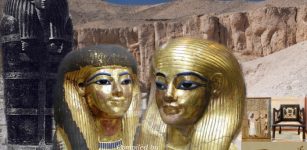 Amazing Tomb Of Yuya And Tjuyu Filled With Ancient Treasures In The Valley Of The Kings
Featured Stories | Jun 2, 2021
Amazing Tomb Of Yuya And Tjuyu Filled With Ancient Treasures In The Valley Of The Kings
Featured Stories | Jun 2, 2021 -
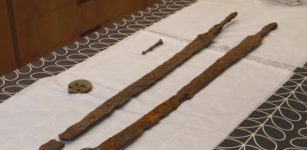 Unique Ancient Roman Cavalry Swords Found In Cotswolds, UK
Archaeology | Sep 18, 2023
Unique Ancient Roman Cavalry Swords Found In Cotswolds, UK
Archaeology | Sep 18, 2023 -
 Mount’s Bay, Lyonesse, Langarroc: Legendary Submerged Lands And Buried Towns Of Cornwall
Featured Stories | Apr 21, 2022
Mount’s Bay, Lyonesse, Langarroc: Legendary Submerged Lands And Buried Towns Of Cornwall
Featured Stories | Apr 21, 2022 -
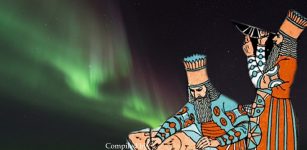 Evidence Of Unusual Solar Activity Discovered On Ancient Cuneiform Tablets
Archaeology | Oct 16, 2019
Evidence Of Unusual Solar Activity Discovered On Ancient Cuneiform Tablets
Archaeology | Oct 16, 2019 -
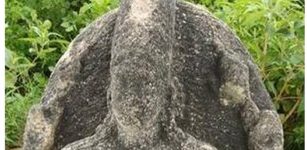 8th Century Sculpture Of Lord Vishnu Belonging To Pandya Dynasty – Unearthed
Archaeology | Sep 16, 2020
8th Century Sculpture Of Lord Vishnu Belonging To Pandya Dynasty – Unearthed
Archaeology | Sep 16, 2020 -
 The City Of David – Why Is It So Controversial?
Biblical Mysteries | Jan 9, 2019
The City Of David – Why Is It So Controversial?
Biblical Mysteries | Jan 9, 2019 -
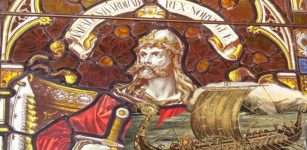 On This Day In History: The Battle Of Fulford – King Hardrada Against Saxon Troops – Was Fought – On Sep 20, 1066
News | Sep 20, 2016
On This Day In History: The Battle Of Fulford – King Hardrada Against Saxon Troops – Was Fought – On Sep 20, 1066
News | Sep 20, 2016 -
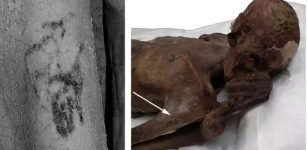 World’s Oldest Tattoos Discovered On Egyptian Mummies Re-Write History Of Tattoos
Archaeology | Mar 2, 2018
World’s Oldest Tattoos Discovered On Egyptian Mummies Re-Write History Of Tattoos
Archaeology | Mar 2, 2018 -
 Ancient Chinese Ingenuity Created Sophisticated Time Keeping Machines: Proof Of Remarkable Ancient Knowledge
Ancient Technology | Jan 14, 2019
Ancient Chinese Ingenuity Created Sophisticated Time Keeping Machines: Proof Of Remarkable Ancient Knowledge
Ancient Technology | Jan 14, 2019 -
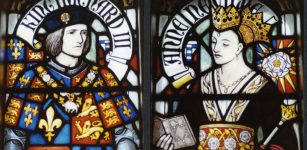 On This Day In History: Mysterious Death Of White Queen Anne Neville – On Mar 16, 1485
News | Mar 16, 2017
On This Day In History: Mysterious Death Of White Queen Anne Neville – On Mar 16, 1485
News | Mar 16, 2017 -
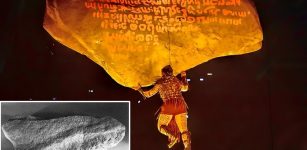 Undeciphered Singapore Stone’s Carvings – New Attempt To Crack The Puzzle
Artifacts | Jun 11, 2024
Undeciphered Singapore Stone’s Carvings – New Attempt To Crack The Puzzle
Artifacts | Jun 11, 2024 -
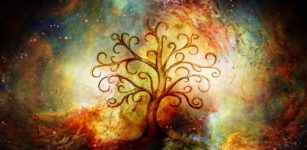 Celtic Tree Of Life – Portal To Invisible Worlds And Source Of Sacred Knowledge
Celtic Mythology | Jul 26, 2021
Celtic Tree Of Life – Portal To Invisible Worlds And Source Of Sacred Knowledge
Celtic Mythology | Jul 26, 2021 -
 Your Neanderthal Genes May Prevent You From Metabolizing Drugs Efficiently
Archaeology | Jul 25, 2022
Your Neanderthal Genes May Prevent You From Metabolizing Drugs Efficiently
Archaeology | Jul 25, 2022 -
 Beware Of The Shapeshifting Gaelic Bodach Who May Be Difficult To Trick
Christmas Traditions | Dec 3, 2021
Beware Of The Shapeshifting Gaelic Bodach Who May Be Difficult To Trick
Christmas Traditions | Dec 3, 2021 -
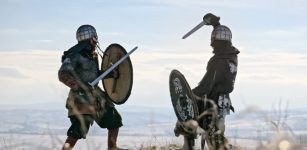 Why Were Swords So Important To Ancient Vikings?
Ancient History Facts | Oct 4, 2017
Why Were Swords So Important To Ancient Vikings?
Ancient History Facts | Oct 4, 2017 -
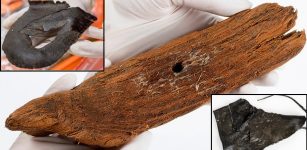 Ancient Wooden Toy Boat And Ancient Shoes That Dates Back To The Reign Of King St. Olav – Found
Archaeology | Mar 1, 2017
Ancient Wooden Toy Boat And Ancient Shoes That Dates Back To The Reign Of King St. Olav – Found
Archaeology | Mar 1, 2017 -
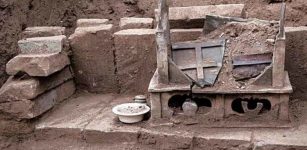 Does This Ancient Box Contain Buddha’s Cremated Remains?
Archaeology | Nov 15, 2017
Does This Ancient Box Contain Buddha’s Cremated Remains?
Archaeology | Nov 15, 2017 -
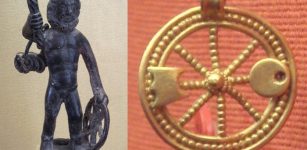 Taranis – Celtic God Of Wheel And Thunder Resembled Roman God Jupiter
Celtic Mythology | Jul 15, 2019
Taranis – Celtic God Of Wheel And Thunder Resembled Roman God Jupiter
Celtic Mythology | Jul 15, 2019 -
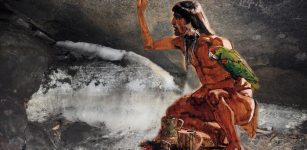 Ancestral Puebloans Survived Devastating Climate Change Hiding In New Mexico Lava Tubes
Archaeology | Nov 20, 2020
Ancestral Puebloans Survived Devastating Climate Change Hiding In New Mexico Lava Tubes
Archaeology | Nov 20, 2020


